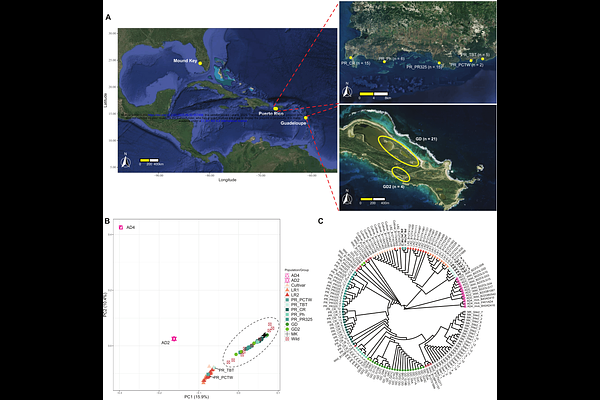Comparative population genomics of relictual Caribbean island Gossypium hirsutum

Comparative population genomics of relictual Caribbean island Gossypium hirsutum
Ning, W.; Hu, G.; Yuan, D.; Arick, M. A.; Hsu, C.-Y.; Magbanua, Z. V.; Pechanova, O.; Peterson, D. G.; Dong, Y.; Udall, J.; Grover, C.; Wendel, J.
AbstractGossypium hirsutum is the world\'s most important source of cotton fiber, yet the diversity and population structure of its wild forms remain largely unexplored. The complex domestication history of G. hirsutum combined with reciprocal introgression with a second domesticated species, G. barbadense, has generated a wealth of morphological forms and feral derivatives of both species and their interspecies recombinants, which collectively are scattered across a large geographic range in arid regions of the Caribbean basin. Here we assessed genetic diversity within and among populations from two Caribbean islands, Puerto Rico (n = 43, five sites) and Guadeloupe (n = 25, one site), which contain putative wild and/or introgressed forms. Using whole-genome resequencing data and a phylogenomic framework derived from a broader genomic survey, we parsed individuals into feral derivatives and truly wild forms. Feral cottons display uneven levels of genetic and morphological resemblance to domesticated cottons, with diverse patterns of genetic variation and heterozygosity. These patterns are inferred to reflect a complex history of interspecific and intraspecific gene flow that is spatially highly variable in its effects. Wild cottons in both Caribbean islands appear to be relatively inbred, especially the Guadeloupe samples. Our results highlight the dynamics of population demographics in relictual wild cottons that experienced profound genetic bottlenecks associated with repeated habitat destruction superimposed on a natural ecogeographical distribution comprising widely scattered populations. These results have implications for conservation and utilization of wild diversity in G. hirsutum.